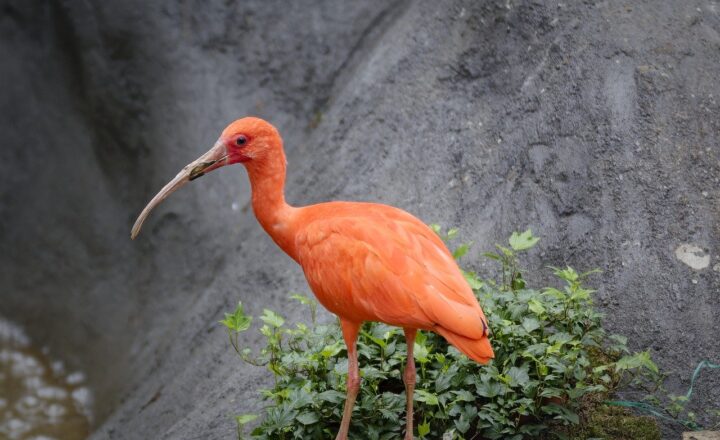The Strangest and Most Unique Animals That Were Once Believed to Be Myths or Legends
November 17, 2024

Throughout history, the natural world has often been a source of fascination and mystery. From the stories carried through generations to the tall tales spun by travelers and explorers, some animals have entered the collective imagination as mythical creatures. However, many of these supposed legends turned out to be grounded in reality. Today, we’ll take a closer look at some of the strangest and most unique animals that were once believed to be myths or legends but have since been confirmed to exist.
### 1. The Okapi: Africa’s Unique Giraffe Relative
The okapi (Okapia johnstoni) is a fascinating animal native to the lush rainforests of the Democratic Republic of the Congo. For a long time, Western scientists did not believe the okapi existed, as it was known only by locals and described in local legends. This elusive creature, characterized by its zebra-like stripes on its legs and its giraffe-like body, was only formally discovered in 1901.
The okapi played a mysterious role in local folklore, often described as a unicorn due to its elusive nature. Its distinct features reflect an adaptation to rainforests — the dark coat helps it blend into the shadows, while its long tongue is perfect for browsing on leaves in high branches.
### 2. The Coelacanth: The Living Fossil
Once considered extinct for 66 million years, the coelacanth (Latimeria chalumnae) is often referred to as a “living fossil.” This prehistoric fish was thought to have disappeared along with the dinosaurs until one was discovered off the coast of South Africa in 1938.
Before its rediscovery, the coelacanth existed only in myths, tales of monstrous creatures lurking in deep seas piqued the imagination of many. Renowned for its unique lobed fins, the coelacanth has a lineage believed to date back nearly 400 million years, showcasing a distinctive body structure that has changed little over millennia.
### 3. The Platypus: Nature’s Oddity
Few animals are as bizarre and unique as the platypus (Ornithorhynchus anatinus). Initially discovered by European explorers in the late 18th century, many thought the platypus was a hoax due to its extraordinary combination of features — a duck-like beak, webbed feet, and the ability to lay eggs despite being a mammal.
In fact, when scientists first examined the platypus specimen, they believed it had been altered or artificially created. Today, this monotreme is a symbol of the unique biodiversity found in Australia, and its peculiar traits continue to captivate the world, reinforcing the idea that nature is full of surprises.
### 4. The Kakapo: The Flightless Parrot
The kakapo (Strigops habroptilus) is another animal that was once thought to be no more than a legend. Native to New Zealand, the kakapo is a flightless parrot notable for its nocturnal habits and unique courtship rituals. Once believed to be extinct in the late 20th century, conservationists rediscovered a small population on remote islands in the 1990s.
With only a few dozen kakapos left, their story of survival from the brink of extinction remains compelling. The bird has become a symbol of conservation efforts, inspiring initiatives aimed at protecting endangered species worldwide.
### 5. The Aye-aye: A Nighttime Enigma
The aye-aye (Daubentonia madagascariensis) of Madagascar presents yet another case of extraordinary mythification. With its oversized middle finger and unsettling appearance, this nocturnal primate was once thought to be a bad omen. Local legends described the aye-aye as an evil spirit, resulting in the unnecessary killing of many individuals through fear and superstition.
Despite being relatively unknown outside Madagascar, the aye-aye has been the subject of fascination among wildlife enthusiasts. Its unique adaptation for foraging, utilizing its elongated fingers to tap on trees and extract insects, showcases the incredible diversity of evolution.
### 6. The Plesiosaur: The Loch Ness Monster?
The plesiosaur has long been the subject of speculation regarding undiscovered aquatic creatures, particularly the infamous Loch Ness Monster. Sightings of the creature in Scotland have fueled myths and legends for decades, but the existence of plesiosaurs was based on fossil evidence dating back to the time of the dinosaurs.
While no modern-day sightings of a plesiosaur exist, the fascination with this ancient marine reptile sparked imaginations, highlighting humanity’s enduring love for mythical creatures in dark depths.
### 7. The Thylacine: The Tasmanian Tiger
The thylacine (Thylacinus cynocephalus) is often relegated to the realm of legend due to its extinction in the 20th century. Also known as the Tasmanian tiger for its distinctive stripes, the thylacine was once believed to be a spectral animal disappearing into shadows.
Efforts to capture and document its existence were unsuccessful, leading many to believe the animal belonged only in the realm of folklore. Recent unconfirmed sightings continue to pique interest, positioning the thylacine as a mysterious creature of legend.
### Conclusion
Myths and legends often reflect humanity’s fears and fascinations with the unknown. The story of these animals showcases how historical narratives and natural history can intertwine, revealing a complex tapestry of truth and imagination. As we continue to explore the world, who knows what other creatures may lurk in the shadows, waiting to challenge our understanding of reality?
Every story of an animal believed to be myth or legend speaks to our innate curiosity about the natural world. Rather than dismissing tales as mere fantasy, it’s crucial to investigate these stories — many may hide intriguing truths about the diverse species that share our planet. The journey of understanding continues, reminding us that nature consistently defies expectations and reignites our wonder for the world around us.







